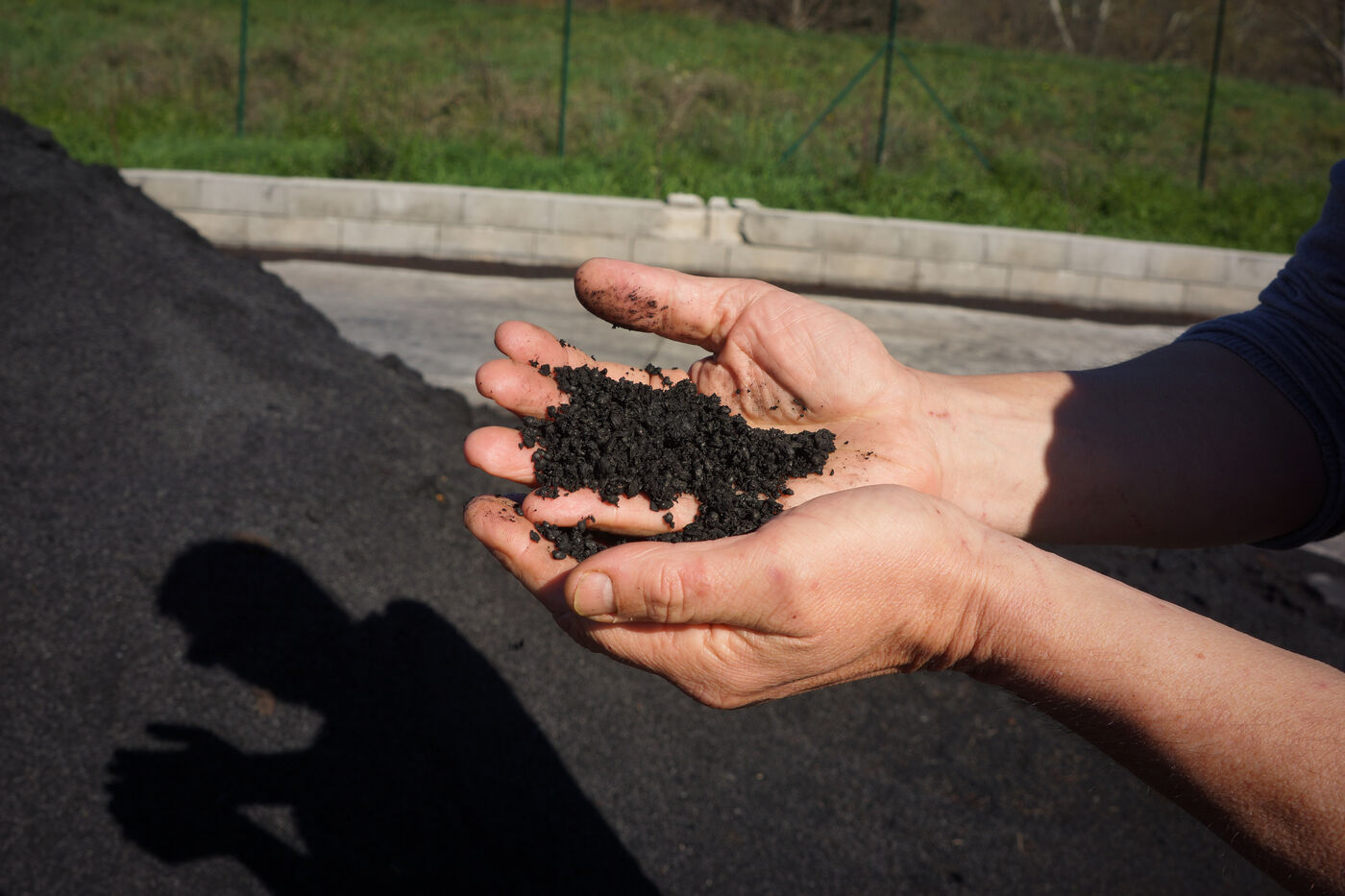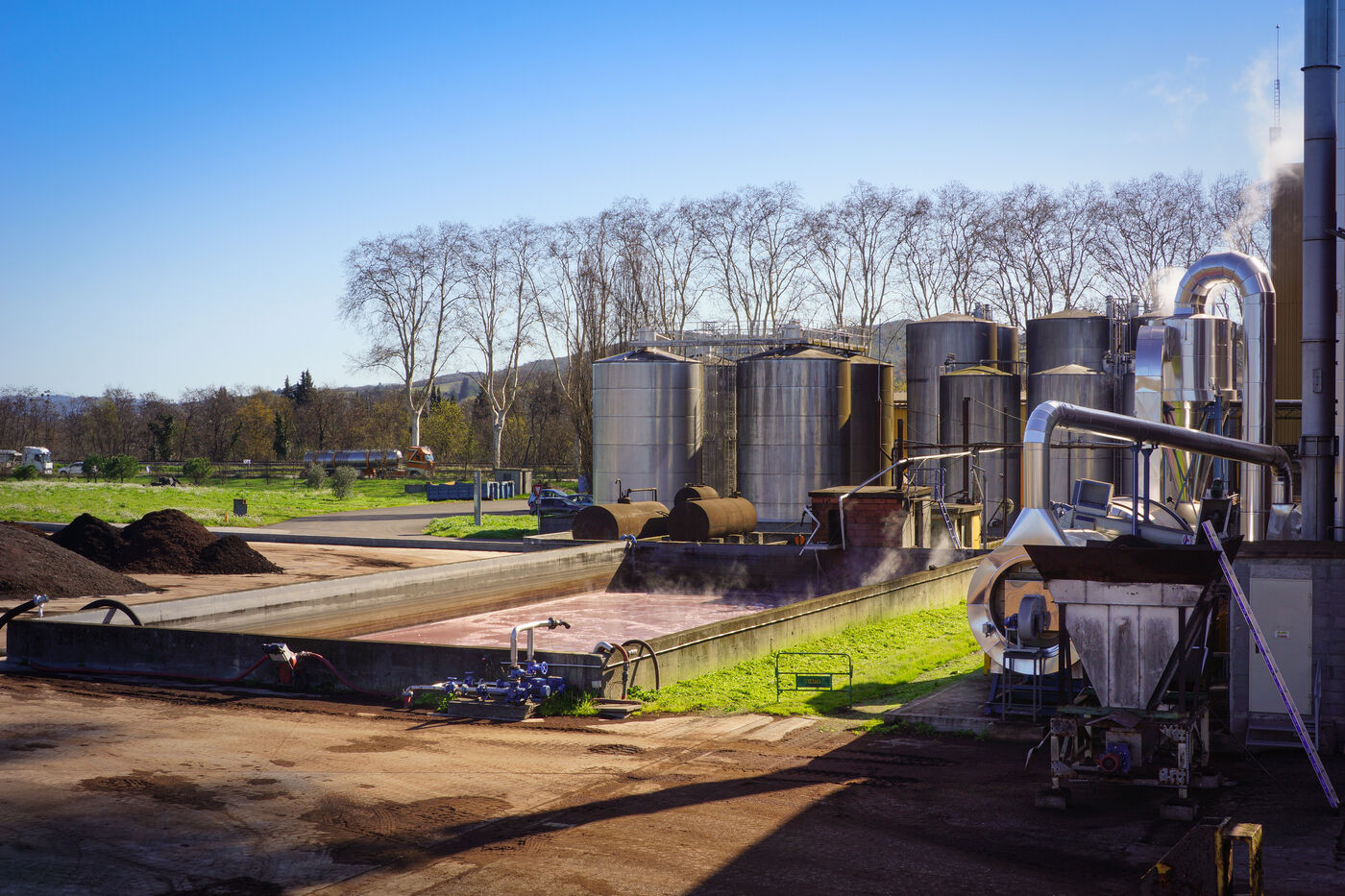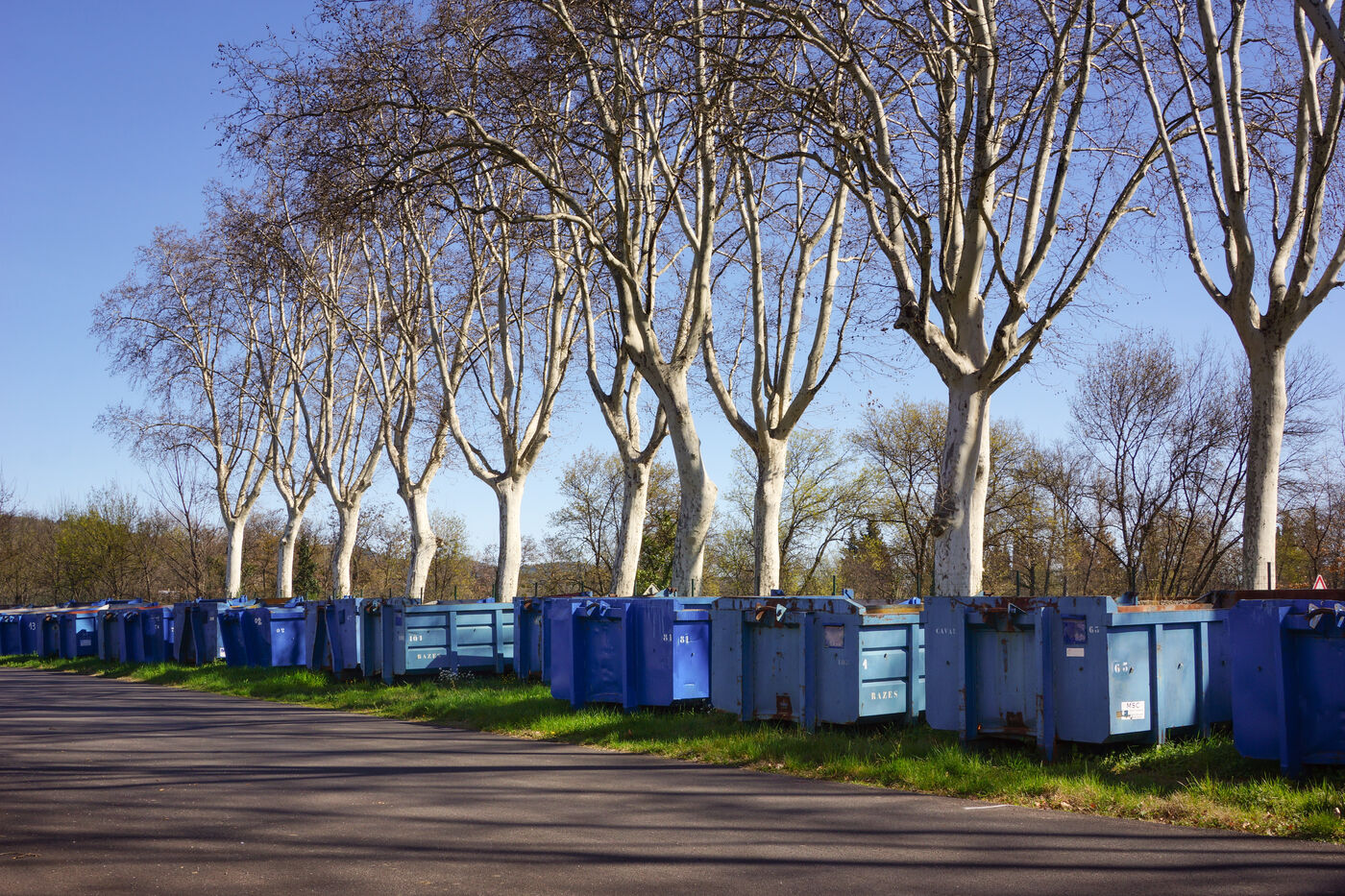La distillerie La Cavale produit son propre gaz
À Limoux, la distillerie La Cavale a d'importants besoins en gaz pour alimenter le brûleur de son séchoir à pépins. Depuis un an, elle est la première distillerie de France et d'Europe à produire du gaz de synthèse à partir de la peau de marc de raisins.
Créée en 1921, la Coopérative Agricole de Viticulteurs et Agriculteurs de Limoux et Environs (CAVALE) et sa filiale SICAVAL - qui a en gérance les magasins Gamm Vert - emploie une cinquantaine de salariés. Dirigée par Christophe Bonnemort depuis 2014, la coopérative travaille avec 1 000 adhérents et réalise un chiffre d'affaires de 15 M€. Avec une branche approvisionnement, une partie distillerie, une activité de collecte de céréales et un moulin, la CAVALE compte 700 adhérents approvisionnement, 450 viticulteurs, 150 éleveurs et 100 céréaliers. Elle comporte également des adhérents oléiculteurs et des caves particulières adhérentes uniquement pour amener du marc de raisin. « La collecte de marc de raisin représente 10 500 tonnes de marc, 15 000 hl de lie qui permettent de faire 7 000 hl d?alcool, de l'huile de pépins, des colorants ou de la pulpe pour l'engrais. À la fin, il nous reste un marc épépiné, grossier et épuisé autour des 5 000 à 6 000 tonnes », explique Christophe Bonnemort qui a à coeur d'exprimer que la Cavale « est une coopérative de service à taille humaine, avec un ancrage territorial sur tout le Limouxin, la Haute-Vallée, le Razès et les Hautes-Corbières ».
Une recherche d'autonomie énergétique
Christophe Bonnemort en est sûr, « pour continuer d'exister, il faut innover ». Alors il y a 10 ans, la Cavale se lance vers une recherche d?autonomie énergétique et fait appel à l'ADEME. Afin de contourner certaines problématiques environnementales liées à la combustion de la biomasse, la coopérative choisit la gazéification. « Dans un premier temps, nous avons regardé ce qui se faisait ailleurs, nous avons réalisé une étude poussée pour chiffrer le projet puis nous avons rédigé un cahier des charges pour lancer un appel d?offres auprès des constructeurs de gazéification. » Le souhait du directeur général était que tous les besoins en énergie de l'entreprise - autour de 2 500 MW par an - soient comblés par la pyrogazéification. La technologie de l?entreprise indienne Ankur Scientific Energy Technologies est donc choisie. « Gazotech, son représentant français s'est associé à Eiffage Énergie Systèmes, ce qui a énormément sécurisé le conseil d?administration. » Pour un coût total d'1 M€, la construction de l'outil s'est faite en Inde en octobre 2020, il a ensuite été démonté, transporté en bateau puis remonté à Limoux et a démarré pour la première fois en janvier 2022. Après un an d?utilisation et six mois de façon régulière, Christian Bonnemort précise : « Nous sommes maintenant en train d'acquérir la technicité et de se l'approprier. C'est une vraie aventure. L'innovation n'est pas dans le principe, mais dans son utilisation. »
Une économie de 4 500€ par semaine
« Nous avons été freinés par l'adaptation du gazéificateur à notre besoin, à savoir le séchoir, qui a des besoins variables. Il a fallu asservir le gazéificateur au fonctionnement du séchoir qui dépend de l'humidité du raisin. » Pour que le gazéificateur fonctionne en continu, la coopérative a mis en place un brûleur bicombustible qui fonctionne au Syngas ou au gaz naturel (qui supporte les à-coups). L'adaptation du matériel indien aux normes françaises a également été un obstacle : « L'électricité n'est pas la même, la couleur des fils non plus, ils n'ont pas de garde-corps pour sécuriser le personnel, pour la gestion du gaz il a fallu créer des zones ATEX et gérer la poussière. » Aujourd'hui, la coopérative qui dépense 66 € le MW, considère que sur une semaine d'utilisation de son outil, elle économise 70 à 80 MWH, soit 4 500 € par semaine. La moitié de l'équipe sur place sait faire fonctionner cet outil incontournable de l'usine dont l'activité de séchage de pépin et de pulpe est devenue quasi aussi importante que la production d'alcool. « Nous faisons aussi de la prestation de séchage pour d?autres distilleries. » L'usine s'est d'ailleurs dotée d'un second séchoir l'année dernière qui tourne au gaz naturel et devrait bientôt fonctionner au méthane produit sur la station d'épuration attenante. « Et pour finir d'être autonomes en énergie, nous envisageons de substituer l?utilisation de la chaudière gaz, qui nous permet de distiller, et de l'alimenter par le bois de nos adhérents. »
La Cavale distillery produces its own gas
In Limoux, the La Cavale distillery has major gas needs to fuel the burner of its pips dryer. For the past year, it has been the first distillery in France and Europe to produce syngas from grape marc skins.
Founded in 1921, the Coopérative Agricole de Viticulteurs et Agriculteurs de Limoux et Environs (CAVALE) and its subsidiary SICAVAL - which manages the Gamm Vert stores - employ some fifty people. Headed by Christophe Bonnemort since 2014, the cooperative works with 1,000 members and generates sales of €15 million. With a supply branch, a distillery, a cereal collection business and a mill, CAVALE has 700 supply members, 450 winegrowers, 150 livestock farmers and 100 cereal growers. It also has a number of olive grower members and private cellars who join just to bring in grape marc. "The collection of grape marc represents 10,500 tonnes of marc, 15,000 hl of lees, which are used to make 7,000 hl of alcohol, seed oil, colorants or pulp for fertilizer. At the end of the day, we're left with 5,000 to 6,000 tonnes of coarse, depleted pomace," explains Christophe Bonnemort, who is keen to emphasize that La Cavale "is a service cooperative on a human scale, with its roots in the Limouxin, Haute-Vallée, Razès and Hautes-Corbières regions".
A quest for energy autonomy
Christophe Bonnemort is convinced that "to continue to exist, you have to innovate". So, 10 years ago, La Cavale embarked on a quest for energy autonomy, and turned to ADEME for help. To avoid certain environmental problems associated with biomass combustion, the cooperative opted for gasification. "Initially, we looked at what was being done elsewhere, carried out an in-depth study to put a figure on the project, and then drew up specifications to issue a call for tenders to gasification manufacturers." The Managing Director's wish was that all the company's energy needs - around 2,500 MW per year - should be met by pyrogasification. The technology developed by the Indian company Ankur Scientific Energy Technologies was therefore chosen. "Gazotech, its French representative, teamed up with Eiffage Énergie Systèmes, which gave the board of directors a great deal of confidence. At a total cost of €1m, the tool was built in India in October 2020, then dismantled, transported by boat and reassembled in Limoux, and started up for the first time in January 2022. After a year's use, and six months on a regular basis, Christian Bonnemort explains: "We're now in the process of acquiring the technology and making it our own. It's a real adventure. The innovation is not in the principle, but in its use.
Savings of €4,500 per week
"We were hampered in adapting the gasifier to our needs, namely the dryer, which has variable requirements. We had to link the gasifier to the dryer's operation, which depends on the humidity of the grapes. To ensure continuous operation of the gasifier, the cooperative installed a dual-fuel burner that runs on Syngas or natural gas (which withstands the jolts). Adapting the Indian equipment to French standards was also an obstacle: "Electricity isn't the same, nor is the color of the wires, they don't have guardrails to keep staff safe, and for gas management we had to create ATEX zones and manage dust." Today, the cooperative, which spends €66 per MW, reckons that over a week's use of its tool, it saves 70 to 80 MWH, or €4,500 per week. Half the team on site knows how to operate this essential tool of the plant, whose seed and pulp drying activity has become almost as important as alcohol production. "We also provide drying services for other distilleries. Last year, the plant acquired a second dryer, which runs on natural gas and should soon be running on methane produced at the adjacent wastewater treatment plant. "And to complete our energy self-sufficiency, we plan to substitute the use of the gas boiler, which enables us to distill, for the use of methane gas.






















